Trim scenes — the settings in which harvested marijuana plants are processed for consumption — vary greatly. Variables include the size of the harvest, the method for processing the harvest (machine- or hand-trimming), the accommodations/work space, the quality/type of weed and the attitudes/skill sets of the trimmer(s).
Some farmers dry their fresh-cut cannabis at the grow site out in the boonies, then bring the dried, untrimmed weed to their house full of trimmers in town. Other farmers have trimmers work right there at the property where the weed was grown. Some trimmers bring totes or contractor bags full of dried, untrimmed weed to their own homes, so they can trim weed in their living rooms, in front of the TV.
Just like trim scenes, trimmers themselves run the gamut too, from professional crews to trim tourists with varying levels of experience to locally-based solo operators that go from scene to scene, wherever they can find good work.
Trimming weed is tedious work, my trimmer friends tell me, and success as a trimmer requires focus, patience, perseverance, good connections and knowledge of tricks of the trade. Plus, there is etiquette involved. One could write a book on trim scene etiquette. Just the other day, someone told me, “I want to write a book on trim scene etiquette.”
For example:
- Don’t assume that meals are going to be provided at the trim scene. If you are unsure about the food supply or if you have special dietary needs, then bring grub for yourself.
- Don’t assume sleeping accommodations will be provided either. If you are going to be at a trim scene on the hill for days on end, then bring adequate camping gear, just in case.
- You might want to bring your own scissors, scissors-cleaning apparatus, gloves and apron too. Bring whatever tools you need to do your job comfortably.
- Don’t “cherry pick.” Trimmers generally get paid by weight, $200 a pound is standard. Cherry picking trimmers pick only the biggest, heaviest colas to trim, leaving the small buds and the larf (airy buds) for others to deal with. Check out the poster insert in the newest Savage Henry Magazine Harvest Issue to get an idea of how people feel about cherry pickers.
- Don’t help yourself to weed or trim because you think nobody is going to notice it’s gone. If you want weed so bad, ask the farmer or trim boss for some nugs. They will probably hook you up.
###
A cannabis harvest might go like this: Plants are chopped down and dried, with leaves and buds still attached to the stalks. Trimmers then remove the dried buds from the stems and either hand-trim or machine-trim them to remove excess leaf material. The excess leaf material (trim) is used somehow, maybe for making hash, and the buds are ready for smokeage.
Or, a harvest might go like this: Plants are chopped down. Then the plants are “bucked down,” meaning big outer leaves (the fan leaves) are snipped off the branch; then the buds are snipped off the branch into a container of some sort. The wet buds are machine-processed to remove excess leaf material. Then the buds are dried.
Here are some photos from a trim scene that fits scenario #2: A crew of people assembled at a full-sun outdoor grow site to cut down then buck down plants for the machine. The wet buds were machine-processed, then dried in hanging mesh drying racks. The machine collected the trim, which the farmer will put to use at a later date.
I have to say, the machine’s trim job looks pretty damn good. It’s quick and the buds have a consistent appearance. But check out the photo of nugs in my palm. Some of the stems look chewed up. A buyer with a discerning eye will know that this weed was machine-trimmed — that is, if this farmer chooses to market this weed as-is, with no further processing by hand.
This particular machine, the T4 Twister, processed small to fairly large buds with no problem at all, but I doubt a farmer would want to process prize colas with it. And this machine is noisy, but again, it’s quick. The people bucking the plants down had a hard time keeping up with it.
The farmers are stoked. One of them told me that an advantage of this machine is that it can help deter theft. The crew only handles wet weed. By the time the trimmed flowers are dry and weighed up in pounds, the crew is long gone. At this scene, the majority of the crew didn’t even go near the drying racks; only the two machine operators were placing the trimmed up buds in the racks.
###
Do other farmers love trim machines? Apparently so. Trim Scene Solutions in Southern Humboldt does a bustling business in selling and renting both wet and dry trim machines. Yesterday, TSS employee Orion Magpie told me that the T4 Twister and the Triminator are especially popular. He said they can’t seem to keep either in stock this season.
According to Magpie, a lot of people are new to the machines, so their rental program is popular too because it gives people a chance to try the machines without having to commit to a purchase. (The T4 Twister sells for $6,900.) You can rent a Trimpro Rotor at TSS for $300 a day with a $1,200 deposit. Or you can rent a T2 Twister (a larger version of the T4) for $1,000 per day with a $9,500 deposit. Lots of machines, lots of options, broad price range.
###
Industrial agriculture is highly mechanized. So as cannabis becomes legal, more mainstream and mass-produced, will human trimmers become obsolete? Maybe not entirely. After all, you can’t beat the precision of hand trimming. Plus, people are needed to prep the plants for machine-processing. Ultimately, it’s up to farmers to determine what works best for their scenes.
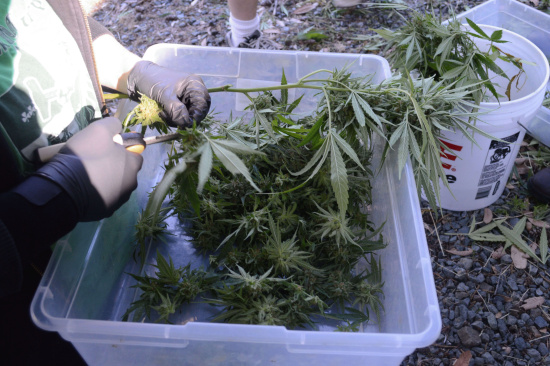
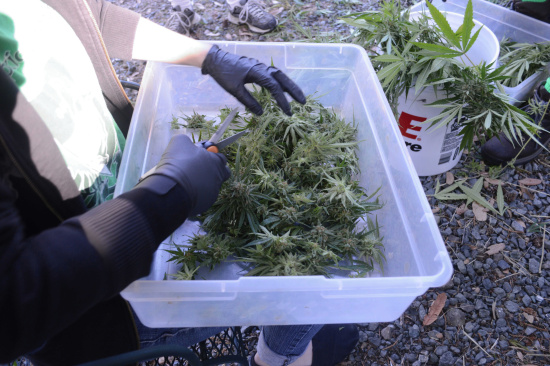
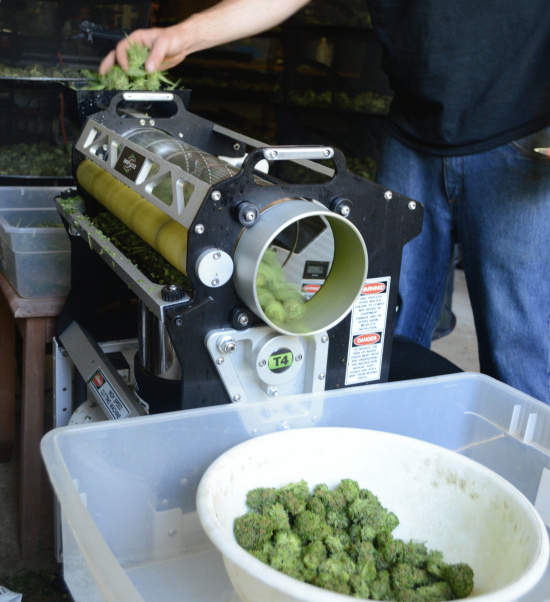
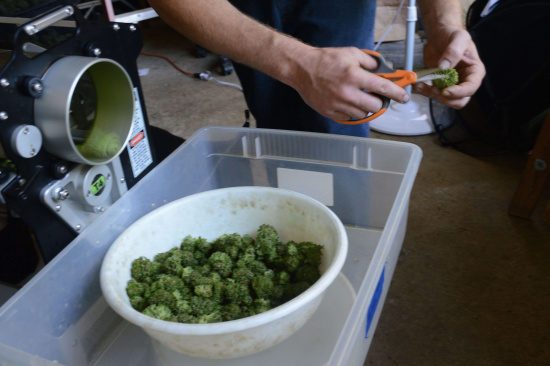
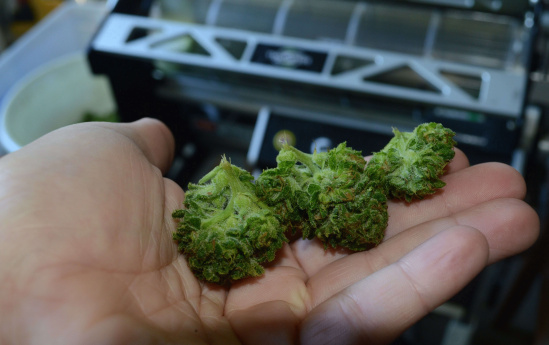
CLICK TO MANAGE